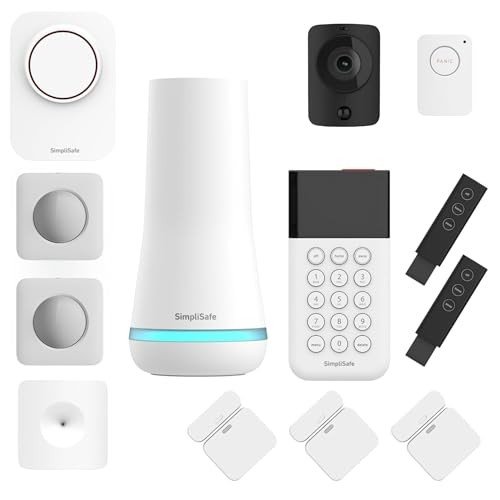15 Funny People Who Are Secretly Working In Interior Lighting UK

Interior Lighting in the UK: A Comprehensive Guide
Interior lighting plays an essential function in developing an environment, improving performance, and expressing personal style within homes and organizations. In the UK, where the weather condition can be unpredictable, reliable lighting is not just about looks however likewise about making spaces feel warm, inviting, and practical. This article looks into various elements of interior lighting, including types, patterns, tips, and regularly asked questions.
Comprehending the Importance of Interior Lighting
Lighting is frequently considered the backbone of interior design. It influences state of mind, performance, and the perceived size of areas. The right lighting can:
- Enhance the architectural features of a room.
- Highlight artwork and design.
- Enhance security and security.
- Impact performance in offices.
- Produce a comfortable atmosphere for relaxation.
Types of Interior Lighting
Effective lighting design usually incorporates three main types of lighting: ambient, job, and accent.
1. Ambient Lighting
This is the primary source of light in a room, providing general lighting. Common sources include:
- Ceiling-mounted fixtures
- Chandeliers
- Recessed lighting
- Soft wall sconces
Ambient lighting develops a foundation from which other lighting types can build upon.
2. Job Lighting
Job lighting concentrates on specific areas to assist in activities such as reading, cooking, or working. This kind of lighting helps to reduce eye pressure and can dramatically impact functionality. Common sources include:
- Desk lamps
- Under-cabinet lights in kitchens
- Checking out lamps next to beds
- Mounted lights focused on work surface areas
3. Accent Lighting
Accent lighting includes drama and highlights particular things or locations, such as artwork or architectural functions. Industrial Lamps UK of lighting can produce visual interest and depth in an area. Sources include:
- Picture lights
- Decorative lamps
- Uplighters
- LED strip lights along racks
Utilizing a combination of these lighting types can lead to a well-balanced and multifunctional space.
Popular Lighting Trends in the UK
The interior lighting landscape in the UK continues to progress, influenced by design patterns, technology, and consumer choices. Here are some popular trends to watch:
- Smart Lighting: The advent of smart innovation has changed how people handle lighting in their homes. Smart bulbs and systems like Philips Hue allow users to manage brightness and color temperature level by means of their smartphones.
- Minimalist Designs: Sleek, simple designs that blend seamlessly with interiors are dominating the marketplace. Pendant lights with fragile frames, LED strips, and geometric shapes are especially trendy.
- Industrial Lighting: This pattern showcases raw, exposed materials. Metal fixtures and Edison bulbs use a vintage touch that is both elegant and practical.
- Eco-Friendly Options: With increasing awareness of sustainability, numerous customers are turning to energy-efficient LED options and fixtures made from sustainable materials.
Tips for Effective Interior Lighting Design
Creating an effective lighting strategy requires thoughtful consideration of numerous elements. Here are some tips:
- Consider the Purpose of Each Room: Every area has a different function. Consider what activities will happen and what type of lighting will support those activities.
- Layer Lighting: Employ several types of lighting within a room to produce depth and versatility. Integrate ambient, task, and accent lighting to enhance both visual appeals and functionality.
- Usage Dimmers: Dimmers permit control over brightness levels, making it possible for users to adjust lighting according to state of mind and time of day.
- Include Natural Light: Make the many of natural lights like windows. Use light, reflective colors for walls and home furnishings to maximize brightness.
- Believe About Color Temperature: Different color temperature levels (measured in Kelvins) create various environments. Warmer temperature levels (around 2700K-3000K) are relaxing, while cooler temperature levels (4000K+) lend a more medical or energetic feel.
Interior Lighting Mistakes to Avoid
To create a well-lit area, it's important to prevent common lighting risks. Here are some mistakes to view for:
- Underestimating Wattage: Insufficient wattage can lead to dim, unwelcoming areas.
- Ignoring Scale: Fixtures that are too little for a room can keep an eye out of place, while large fixtures can overwhelm an area.
- Over-reliance on Ceiling Lights: Relying entirely on overhead lighting can create uninviting shadows; balance with additional lighting types.
- Poor Placement: Misplaced lights can develop areas that are too brilliant or too dark. Strategy positionings attentively.
Frequently asked question Section
1. What is the distinction in between warm white and cool white light?
Warm white light (2700K to 3000K) develops a comfortable, welcoming atmosphere, best for living spaces and bedrooms, while cool white light (4000K to 5000K) is more matched for offices as it enhances concentration and clarity.
2. How can I maximize natural light in my home?
To maximize natural light, use light-colored walls, tactically location mirrors to reflect light, and choose for sheer window coverings that allow sunshine to go through.
3. How do I choose the best light fixtures?
Consider the size of your space, the design of your design, and the function of the location. Ensure the scale of fixtures matches the room and matches the total visual.
4. Are LED lights better than traditional bulbs?
Yes, LED lights are more energy-efficient, have a longer lifespan, and can supply a variety of color temperature levels, making them a more sustainable lighting option.
5. What should I do if particular areas of my room stay too dark?
Think about including additional job or accent lighting to lighten up those areas. Floor lamps, wall sconces, and even strategically placed table lamps can assist relieve dark areas.
Interior lighting is an essential element of home and organization design throughout the UK. Comprehending the different types, current patterns, and finest practices can assist homeowner in producing areas that are not just elegant however also practical. With thoughtful consideration and preparation, reliable lighting can transform any environment, boosting both atmosphere and functionality for several years to come.

